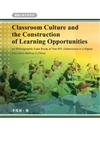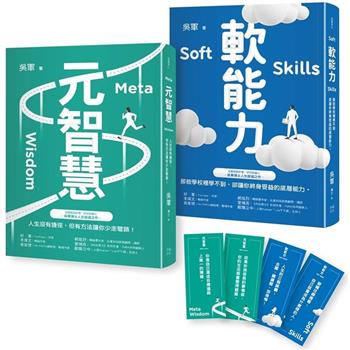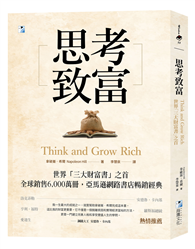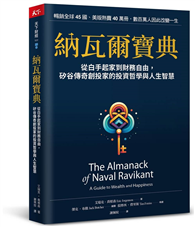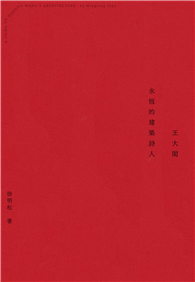Abstract
Acknowledgements
Chapter 1 Introduction
1.1 Personal reflexive experience and rationale for the study
1.2 Purpose of the study and research design
1.3 My research subject
1.4 Significance of the study
1.5 The structure of this book
Chapter 2 Shifting Perceptions of Effective Classroom Practices in China
2.1 EFL classroom teaching and learning traditions in China
2.1.1 CHC, participants’ roles and their classroom performance
2.1.2 G-T method and teacher- centred classroom dynamics
2.1.3 The language testing system and EFL classroom pedagogy
2.2 Opposition to the traditional EFL classroom pedagogy
2.3 Towards more effective EFL classroom pedagogy in the modern era
2.3.1 EFL educational reform in tertiary education in China
2.3.2 “Pedagogical democracy” and CLT
2.3.3 Antithesis and perplexities in EFL classroom pedagogy
Chapter 3 EFL Classroom and Language Learning: A Cultural Approach
3.1 Language classroom as an arena of interactions in research
3.1.1 Teacher-learner interaction and language learning
3.1.2 Learner-learner interaction and language learning
3.1.3 Interactions, acquisition hypotheses, and language learning
3.2 The language classroom as a cultural entity
3.2.1 “Classroom culture” as a metaphor
3.2.2 Classroom cultural components
3.2.2.1 The physical setting
3.2.2.2 The pedagogical goal
3.2.2.3 Demographics of the participants
3.2.2.4 Dispositions of the participants
3.2.2.5 Norm of classroom behaviour
3.2.2.6 Classroom interaction
3.2.3 Classroom culture and language learning
3.2.3.1 Understanding learning opportunity
3.2.3.2 Interaction is central to language learning
3.2.3.3 Language learning is situated at multiple levels
3.2.3.4 Classroom culture and language learning are co- constructed
Chapter 4 Conducting Ethnographic Research in Two Classroom Cultures
4.1 An overview of applied methodologies in classroom research
4.2 My research design
4.2.1 The choice of my subjects and my research questions
4.2.2 My ontological and epistemological orientations
4.2.3 An ethnographic case study
4.2.4 A multimodal data collection process
4.2.4.1 Participant observations
4.2.4.2 Field Notes
4.2.4.3 Interviews
4.2.4.4 Audio-recording
4.2.4.5 Collection of documents and written texts
4.2.5 An inductive and recursive data analysis process
4.2.5.1 Data analysis methods
4.2.5.2 Data analysis procedure
4.2.5.3 An inductive and recursive process and data interpretation
4.3 Piloting and technical issues
4.4 Validity and credibility of the research
4.5 Ethical considerations for the research
4.6 Limitations of the current study
Chapter 5 Portraits of Two EFL Classroom Cultures
5.1 The institutional context and its commitment to innovation
5.2 The EFL classroom culture in Esther’s class
5.2.1 The physical setting and pedagogical goal of Esther’s classroom
5.2.2 Demographics of the classroom culture in Esther’s class
5.2.3 Dispositional features of Esther’s classroom culture
5.2.3.1 Esther’s communication-centred EFL educational ideology
5.2.3.2 Esther’s class-a group of “atypical” Chinese students
5.2.4 Norm of behaviour in Esther’s classroom culture
5.2.5 Interpersonal interactions in Esther’s classroom culture
5.2.5.1 Participants’ bilateral, unidirectional verbal interactions
5.2.5.2 Participants’ bilateral, bidirectional verbal interactions
5.2.5.3 Participants’ multilateral, multidirectional verbal interactions
5.2.6 Interactional symmetry and pedagogical democracy
5.3 The EFL classroom culture in Ying’s class
5.3.1 The physical setting and pedagogical goal of Ying’s classroom
5.3.2 Demographics of the classroom culture in Ying’s class
5.3.3 Dispositional features of Ying’s classroom culture
5.3.3.1 Dichotomy in Ying’s educational ideology
5.3.3.2 Ying’s students are aiming for high academic achievement
5.3.4 Norm of behaviour in Ying’s classroom culture
5.3.5 Interpersonal and textual interactions in Ying’s classroom culture
5.3.5.1 “T-S” bilateral, unidirectional verbal interactions
5.3.5.2 Ying’s kinestic approach and learner-learner interactions
5.3.5.3 Participants’ interactions with text
5.3.5.4 Beyond the pedagogical hierarchy of teacher- fronted interactions
Chapter 6 EFL Classroom Cultures and the Construction of Learning Opportunities
6.1 Congruence of participants’ perceptions and learning opportunity
6.2 “Language learner” teachers and learners’ learning opportunity
6.3 Double-coded MOI and learning opportunity
6.4 Interaction in Esther’s classroom culture and learning opportunity
6.4.1 Esther’s talk and learning opportunity
6.4.2 Individual presentation in Esther’s classroom and learning opportunity
6.4.3 Group work in Esther’s classroom and learning opportunity
6.4.4 Repair in Esther’s classroom and learning opportunity
6.4.5 Extracurricular communication and learning opportunity
6.5 Interactions in Ying’s classroom culture and learning opportunity
6.5.1 Participants’ interaction with text and learning opportunity
6.5.2 Teacher-fronted verbal interaction and learning opportunity
6.5.3 Repair in Ying’s classroom and learning opportunity
6.5.4 Innovation in the “traditional classroom” and learning opportunity
6.6 Extending the understanding of learning opportunity
Chapter 7 New Horizons for Learning:Developing a Positive Classroom Culture
7.1 A summary of my research findings
7.2 The contribution of my study to knowledge
7.2.1 A revelation of life in the two Chinese EFL classroom cultures
7.2.2 A recognition of learners’ significant role
7.2.3 A synthesis of positive classroom cultural traits
7.3 Implications and recommendations
7.3.1 Implications for classroom methodology
7.3.2 Implications for classroom research
7.3.3 Recommendations for future research
7.4 Concluding remarks
Appendix 1:Background information about the university in the study (as in the School document, 2004)
Appendix 2:The three types of courses for English majors at tertiary level (National Curriculum for English Majors at tertiary level, 2000)
Appendix 3:Sample Test for English Majors Band Eight (TEM8)
Appendix 4: Sample transcript of episode in Esther’s classroom
Appendix 5: The use of children’s literature in Esther’s classroom
Appendix 6: Sample transcript of individual presentation in Esther’s classroom
Appendix 7:Topics for simulated interview in Esther’s classroom
Appendix 8:Sample group work in Esther’s classroom
Appendix 9:Sample texts used in Ying’s Classroom
Appendix 10: The text for a drama play in Ying’s classroom (Extract 5.7)
Appendix 11: Sample transcript of episode in Ying’s classroom
Appendix 12: The data collection schedule for my field work
Appendix 13: Sample interview guide for an informal interview
Appendix 14: Sample transcript of a semi-structured interview
Appendix 15: Certificate of Ethical Approval from SELL, UK
Bibliography
